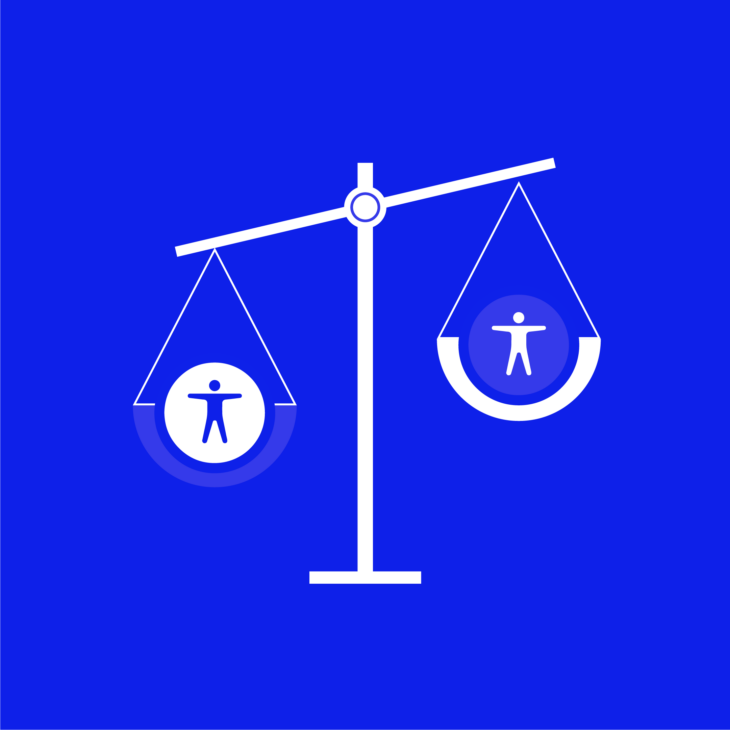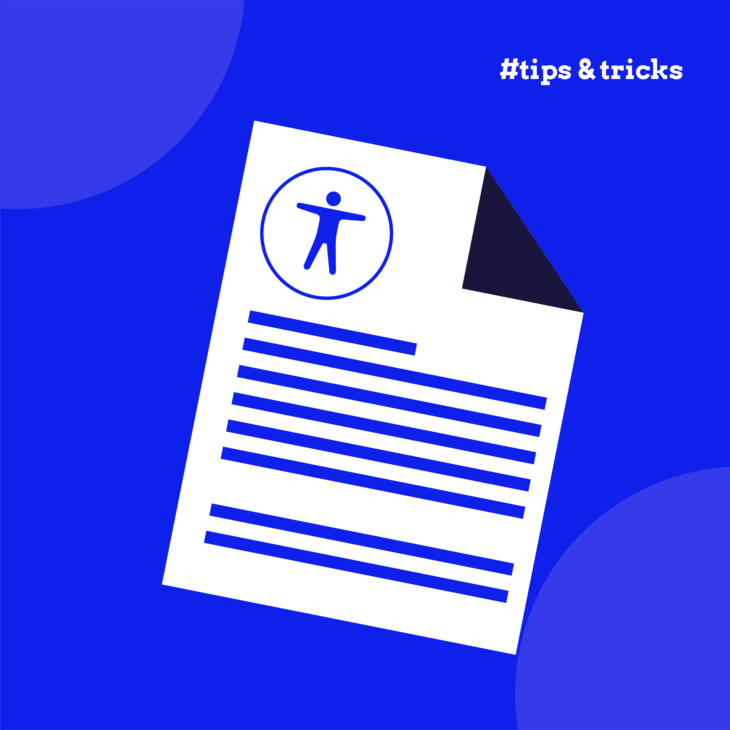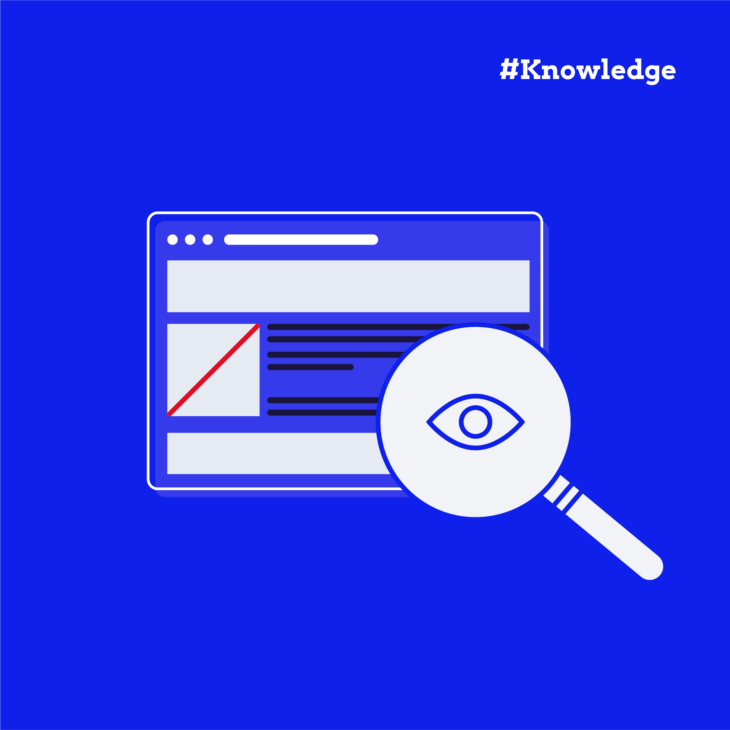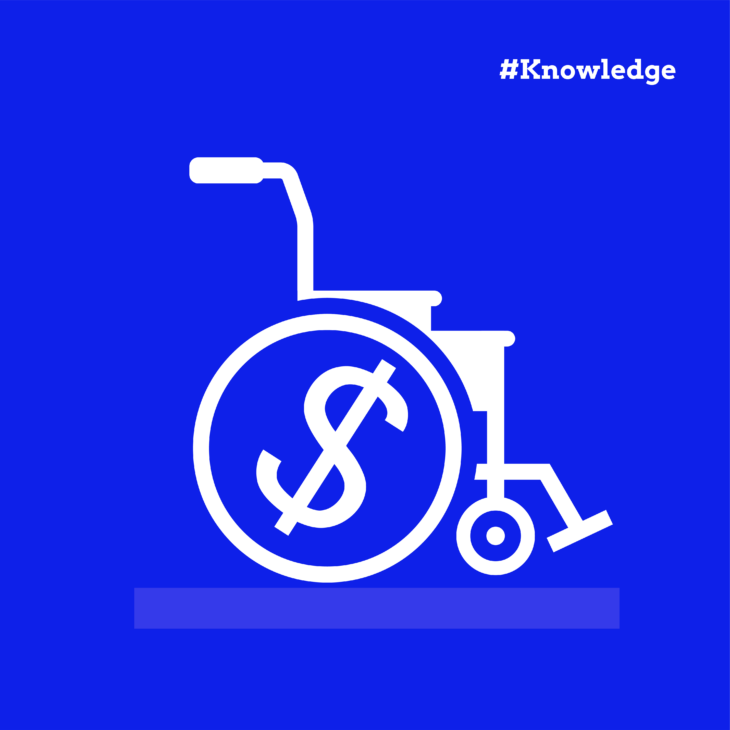Caitlin de Rooij is a Web Accessibility Specialist. She works as an Accessibility Consultant for Level Level and provides training and workshops for enhancing digital accessibility. Caitlin’s expertise lies in ensuring that websites and digital content are designed and developed to be inclusive and usable for individuals with diverse abilities and disabilities.
If you have a website, ensuring its accessibility to everyone is not just a matter of legal compliance – it’s also a crucial step towards reaching a broader audience.
Different laws and regulations set the standards for making websites usable for people with disabilities, and not following them can lead to serious consequences, including lawsuits, fines, and a tarnished brand reputation.
On the flip side, making your website accessible opens up your content to millions more potential users, improving the user experience and your brand’s image.
However, since these laws differ from country to country, it can be difficult to navigate around them and ensure that you are fully compliant. In this article, we’ll discuss the different standards and show you what you need to do to meet them, helping you create an inclusive online environment that welcomes all users.
Understanding the landscape of web accessibility laws
⚠️Disclaimer: The A11y Collective are not legal experts, so this article shouldn’t be considered legal advice – we always advise consulting with a legal advisor and reading the legislation relevant to your site or business in detail.
The first thing you need to know is that web accessibility laws are specific to your business’s location. In this guide, we’ll discuss the regulations in the United States, Canada, the European Union (EU), and Australia, but we advise you to read the laws in full detail. This is especially important for EU members because some laws might be country-specific, as well as countries that are covered by any of these regulations.
Still, the majority of these laws are based on the WCAG (Web Content Accessibility Guidelines) by the World Wide Web Consortium (W3C), which is what we’ll cover first.
Overview of the Web Content Accessibility Guidelines (WCAG)
These guidelines are the international standard for web accessibility and are designed to make web content more accessible to people with disabilities, covering a wide range of recommendations that ensure access and usability.
At the heart of WCAG lie four foundational principles, encapsulated by the acronym POUR:
- Perceivable: Information must be presented in ways that all users can clearly understand.
- Operable: User interface components and navigation must be operable by everyone.
- Understandable: Information and UI operation must be clear and easy to use.
- Robust: Content has to be reliably interpreted by a wide variety of user agents, including assistive technologies.
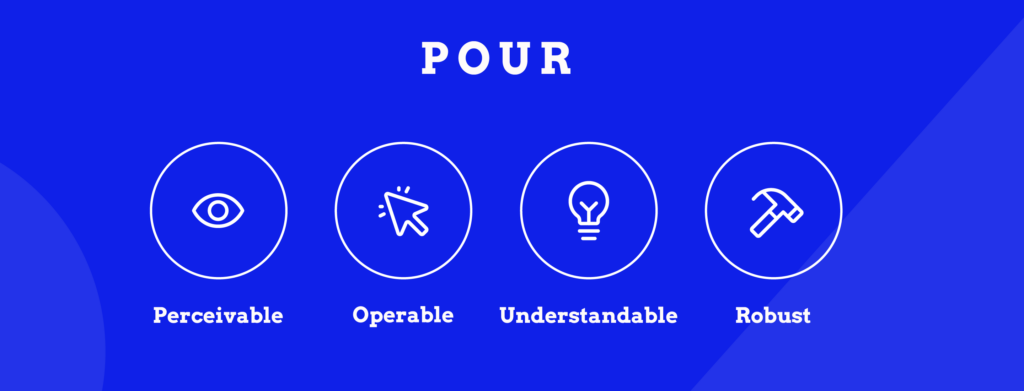
There are also three levels of conformance:
- Level A is the minimum level and is often inadequate for compliance with many accessibility laws.
- Level AA represents a higher standard that addresses the most common barriers for disabled users.
- Level AAA is the most stringent, covering the broadest range of adaptations.
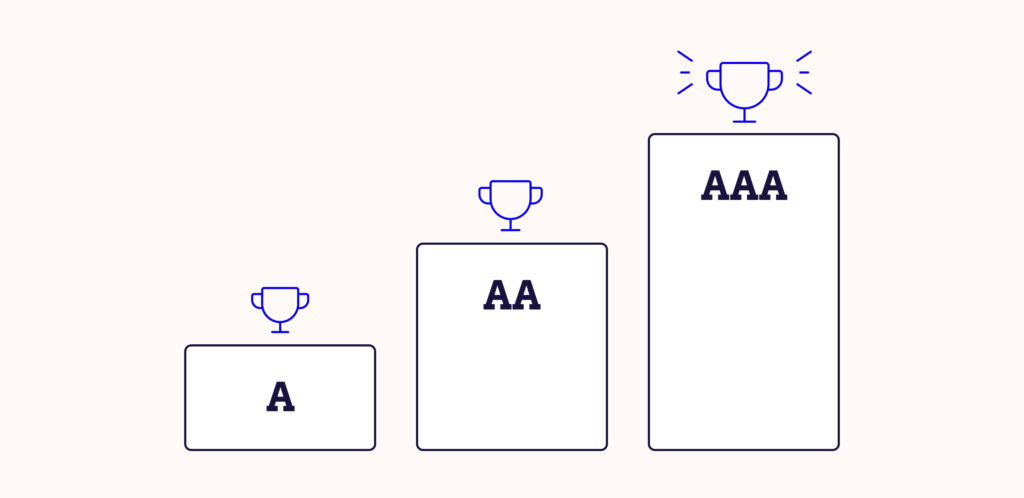
For example, Level A might require captions for videos, Level AA would require audio descriptions, and Level AAA would ensure sign language interpretation is also included.
Although WCAG is a series of guidelines and not legislation, it is the foundation upon which many legal accessibility requirements are built, including the Americans with Disabilities Act (ADA) and Section 508 of the Rehabilitation Act.
Interpreting the Americans with Disabilities Act (ADA)
The Americans with Disabilities Act is a civil rights law that aims to prevent discrimination against individuals with disabilities in significant areas of public life, including digital accessibility. While the ADA does not set explicit web standards, the Department of Justice references the Web Content Accessibility Guidelines as a benchmark for creating accessible digital content.
Despite common misconceptions, not all websites are bound to ADA regulations, and certain exemptions may apply based on business size and sector. Businesses that provide employment, public accommodations, transportation, and telecommunications services are obligated to comply.
Still, any digital platform should adhere to accessibility standards to enhance user experience and accessibility for a wider audience.
Non-compliance carries financial risks, with initial violation fines ranging from $55,000 to $75,000, escalating to as much as $150,000 for further violations.
The best way to check whether your website is ADA-compliant is to assess it, and you can easily do that by following The A11y Collective’s practical checklist on ADA compliance.
Basics of Section 508 of the Rehabilitation Act
Section 508 of the Rehabilitation Act was introduced in 1998 and mandates that U.S. federal agencies ensure their Electronic and Information Technology (EIT) is accessible to people with disabilities, both for the public and their employees. EIT can include public-facing websites and apps, internal documents, emails, telephones, call centers, and electronic training resources.
While these guidelines outline specific accessibility standards, they are modeled on the WCAG POUR principles, particularly the A and AA levels of conformance.
Non-compliance with Section 508 can result in financial penalties, but there are also operational, reputational, and legal repercussions. In the past, legal action has been taken against federal departments that failed to ensure their websites were accessible.
Introduction to website accessibility laws outside the US
European Union (EU)
- EU Web Accessibility Directive: This directive requires all public sector websites and mobile apps to meet WCAG standards, Levels A and AA, for web accessibility. NGOs, educational institutions, and broadcasters whose services do not specifically target individuals with disabilities are exempt, but for those engaged in activities directly related to disability services, following accessibility standards is mandatory.
- European Accessibility Act (EAA): This act applies to the private sector and demands that businesses such as eCommerce platforms, banking services, and mobile device manufacturers incorporate accessibility into their operations. It promotes a more uniform approach to accessible products and services across the EU’s internal market, advocating for proactive compliance from the inception of service design to delivery.
Tip: For an in-depth perspective on what these directives mean in practice and the steps organizations should follow to ensure compliance, visit The A11y Collective’s guide on the European Accessibility Act (EAA).
Canada
In Canada, the Accessible Canada Act (ACA) governs federal organizations, enforcing accessibility standards that span digital technology to transportation. The ACA takes inspiration from the WCAG but still has its own guidelines called the Accessible Canada Regulations. Fines for not complying can escalate to a maximum of CAD 250,000.
There are also province-specific regulations:
- Ontario – Accessibility for Ontarians with Disabilities Act (AODA)
- Manitoba – Accessibility for Manitoban Act (AMA)
- Nova Scotia – Nova Scotia Accessibility Act
- Quebec – Act to secure handicapped persons in the exercise of their rights with a view to achieving social, school, and workplace integration
- Saskatchewan – Accessible Saskatchewan Act
- British Columbia – Accessible British Columbia Act
Australia
- Disability Discrimination Act (DDA): Australia’s approach to inclusivity in the digital space is anchored by the Disability Discrimination Act, which prohibits discrimination and mandates that public utilities and services, including web-based services, accommodate individuals with disabilities. It provides a strong legal foundation for advocating inclusive design and ensuring that digital content is accessible.
- Accessibility Requirements for ICT Products and Services: This mandates organizations, especially those delivering services to the public, adhere to WCAG 2.1 levels A and AA.
Tools and support for simplifying web accessibility law compliance
Ensuring your website meets accessibility standards can seem daunting, but don’t worry – tools and support systems are here to ease the process. Accessibility testing tools, such as WebAIM’s WAVE and the W3C Validator, offer invaluable assistance in identifying areas where your site may fall short of compliance requirements.
Included in the WebAIM WAVE toolset are:
- WAVE Browser Extension: Available for Chrome and Firefox, this extension lets users evaluate web accessibility directly within their browser, providing instant feedback on the accessibility of the webpage being viewed.
- WAVE Standalone API: This allows for automated accessibility checking of web pages and integration of WAVE’s evaluation capabilities into other systems or websites.
- WAVE Webpage: Offers an online interface where users can input a URL to receive an accessibility evaluation of that webpage, highlighting potential issues directly on the page itself.
The W3C Validator tools include:
- Markup validation service: Validates the markup of web pages, ensuring they conform to web standards and identifying errors in HTML or XHTML code, which can impact accessibility.
- CSS validation service: Checks the Cascading Style Sheets (CSS) of a webpage for errors and compliance with CSS standards, which is crucial for ensuring accessible and consistent presentation across different devices.
- Internationalization checker: Evaluates a page’s readiness for international audiences, including aspects like character encoding and language declarations, which are important for global accessibility.
- MobileOK checker: Assesses a webpage’s compatibility and usability on mobile devices, highlighting areas that could hinder accessibility on smaller screens.
- Link checker: Identifies broken links on a webpage, ensuring that users can navigate efficiently and access content without encountering dead ends.
It’s important to note that you shouldn’t rely solely on automated tools when testing the accessibility of your website – manual testing is by far the most effective way to ensure your website is accessible for users of all abilities. It’s also key to remember that web accessibility standards are always evolving and changing, so keeping on top of developments and conducting regular tests is crucial.
The best way to stay ahead of evolving standards is to invest in high-quality web accessibility training. If you know the ins and outs of accessibility guidelines from the start, you can easily avoid future redesign costs and legal headaches.
Taeke Reijenga – Founder & CEO at Level Level“Accessibility standards are constantly evolving, so to stay ahead, you need to embrace continuous learning and always look for ways you can increase your knowledge.”
The A11y Collective offers website owners and developers a suite of courses designed to enhance web accessibility knowledge and give you the skills to implement these crucial standards effectively. Let us help you navigate the complexities of accessibility laws and guidelines, making your site welcoming to all users.
Take action: Ensure your website meets accessibility standards
Ensuring your website meets accessibility standards is crucial, not only for legal reasons but also because everyone should strive to create a more inclusive online space that offers a better experience for all visitors.
Remember, the specific laws and standards you need to comply with vary depending on where you are, so it’s essential to be well-informed about the legislation relevant to your location. Aiming for conformance with the WCAG level A and AA standards is an excellent starting point for making your site more accessible.
As you work towards making your website accessible, remember that learning and adapting are ongoing processes. The A11y Collective’s comprehensive courses are here to support you in this journey, providing the knowledge you need to navigate the complexities of web accessibility confidently.
Take the next step towards creating an accessible, legally compliant website. Explore The A11y Collective’s suite of courses today, and join us in making the internet a welcoming place for everyone!
Ready to get started?
Explore our full range of courses and take the next step in your journey towards building an accessible website.


